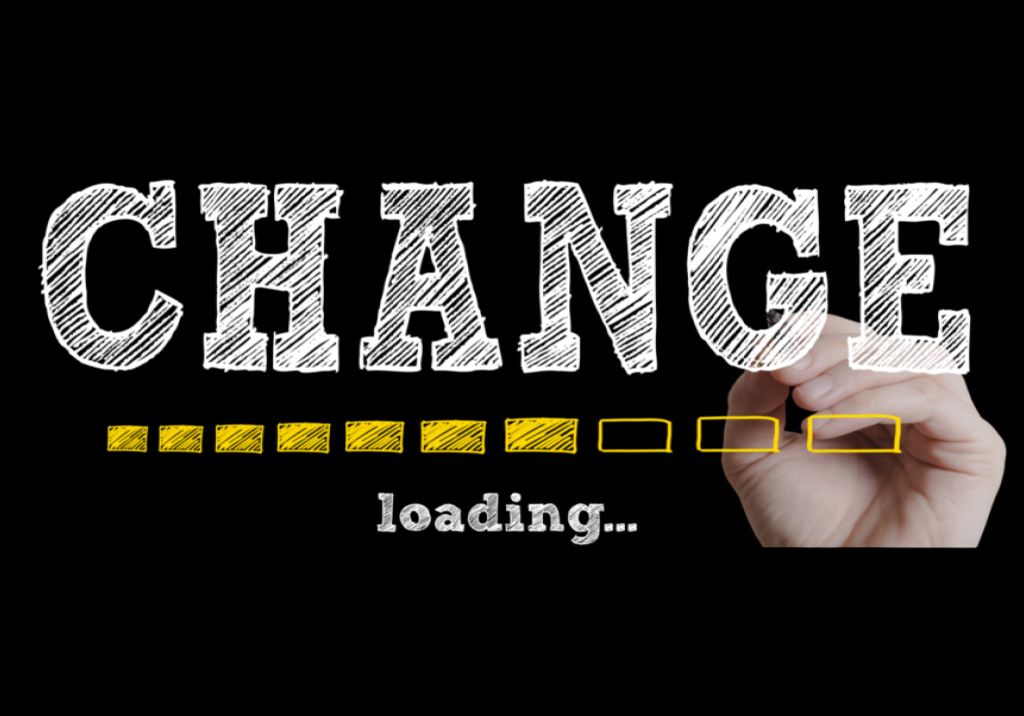Fifty-nine percent of Americans feel powerless when change occurs in the workplace.
Reports show the majority of survey U.S. employees feel as though change is happening to them and there is nothing they can do about it. When the organizational direction and message from leadership is frequently changing, dysfunctional workplace dynamics run rampant. Burnout is nearly inevitable, says the 2022 National Study for Change and Emotion in the Workplace. Burnout and its kin, high turnover, wreak havoc on organizational efficiency, trust (both internal and external), and bottom line.
Retaining employees is always more cost-effective than hiring and training new ones, just as keeping customers is less expensive than acquiring new ones. In this fourth installment of Change Enthusiasm Global’s trademarked C.H.A.N.G.E. traits, “N” stands for Not Rigid. We explore how to navigate and lead others through change more effectively by being flexible, stretching beyond your comfort zone, remaining curious, being open to varied perspectives, and identifying unconscious and conscious biases.
Increase Your Flexibility
A Prosper Insights & Analytics study revealed that over half of Americans don’t want to commute to work anymore, and 44% prefer hybrid or remote models yielding greater work/life balance. If you aren’t willing to update your employee value proposition to include the updated values that prospects are looking for, they’ll go somewhere else. The value proposition for employees is changing in a post-COVID work world. Flexibility and willingness are the two most sought-after attributes of the next generation of employees.
There is a need now, more than ever, to change the way work environments, meetings, and work hours are structured to meet the need of future generations of leadership. A regular contributor to Forbes online, Gary Drenik, during a conversation with CEO and Co-founder of Leadership Circle, Bill Adams, says, “With a [rapidly] changing world comes a necessity to adapt quickly, and it’s clear a leader’s flexibility is their best weapon to steer the ship.”
“Very successful people don’t seek comfort, they seek success and are willing to do what is most uncomfortable. But most of the world is seeking comfort and familiarity, which are traps that cause you to settle for the mediocre. If you want to get to the next level of your business, you’ve got to be comfortable with being uncomfortable.”
Grant Cardone
Your comfort zone is a safety net of trialed successes and proven track records; the ease and familiarity of taking the same route to and from work. We have little cause, generally, to step outside of our comfort zones. Yet, in the comfort zone, complacency and less awareness of surroundings are high. Accidents happen closest to home, as the saying goes. The National Highway Traffic Safety Administration (NHTSA) and research reviews prove 77% of motor vehicle accidents happen close to home. It's hard to see alternatives or small barriers that could have tragic consequences when you repeat the same pattern. Several factors contribute to the high number of accidents, including familiarity, distraction, impairment, and complacency.
During rote operations, little learning occurs even within the confines of familiar routes. When faced with a detour or route change, then what? The consequences of trading flexibility for familiarity can have high-risk consequences that aren't apparent until you drive directly into them. Instead, welcome and promote flexibility in your environment. Jack Canfield says almost everything you want is just outside your comfort zone. By actively engaging in thoughtful decision-making and learning opportunities, you'll have increased opportunities for small trials of managing unknowns, making you more prepared for road closures.
Bringing more flexibility into your environment? Start by trying these tactics:
- Let others challenge your assumptions
- Be open to feedback
- Embrace diverse perspectives
Promote Curiosity
Shift your practices to focus on curiosity over knowing; transparency over concealment. Dr. Francesca Gino, behavioral research scientist, author, and HBR contributor shares that curiosity is the impulse we have to seek new information and experiences and always to try to explore novel and new possibilities. There is a subtle general fear among high-level management nationwide that curiosity slows efficiency and increases risk.
In her book Rebel Talent, Gino discusses a tradeoff between efficiency and innovation. When curiosity is inspired, and there are ways for all of us to make sure that we get things done, we are efficient in accomplishing our work while also keeping an eye on curiosity. Some of the greatest inventions and innovations spawned from curiosity about doing things differently. Curiosity also reduces team friction by encouraging multiple perspectives and learning rather than defending positions or jockeying for what’s perceived to be “right.”
Instead of clinging to what’s safe and familiar in our comfort zones, the curiosity of the unknown creates imaginative opportunities to expand beyond the status quo and breaks through the fear cycle, often trapping us in a risk-free box. Intuit offers company-wide innovation awards to people whose explorations led to new products or processes. They also have “failure” awards for people within the organization whose explorations led to important learning for the team; these awards recognize that the greatest advances often come from failures and learning experiences.
How can you inspire more curiosity in your workplace as a leader? Gino says:
- Hire for curiosity
- Model inquisitiveness
- Emphasize learning goals (instead of results)
- Let employees explore their interests
- Have ““What if…?” Why?” and “How might we…?” days.
Recognize Bias
As a child, if you believed dogs were dangerous, today you might feel tense when one walks nearby, even if you have never been attacked by one. Suppose your workplace operated under a conditioning bias leading to the belief that Asians are meek and skilled at mathematics. In that case you might unconsciously be turned off by a boisterous Asian who hates math because they do not conform to your implicit bias. The world is full of conscious and unconscious biases. Unconscious, or implicit bias, refers to the bias you are unaware of but may be acting on without knowing. Because of this type of bias, we tend to make quick decisions without much thought or control. The first step to learning new information is acknowledging you do not know what you do not know.
The experiences shape unconscious biases you have had throughout your life inherited from your generational upbringing without you knowing it. Unconscious bias shapes our expectations of others and our worldview. Your unconscious bias can even run contradictory to your conscious beliefs. The simple act of saying, I don’t know…” “I don’t understand…” is a step towards opening yourself up to learn and become more educated in those areas. Look at the list below, an excerpt from a Huffington Post article:
- Men are better leaders.
- Black women are “angry.”
- Women are emotional.
- Latino men are lazy.
- Asian people are good at technical things.
- Native American men are drunks.
The Pew Research Center cites women being held to a higher standard than men for performance as the number one reason for the lack of top leadership. The impact of bias on hiring, performance review, and promotion can be sweeping, overt, subtle, and toxic. In 2022, those who identify as women only made up 15% of Fortune 500 CEOs, Other minority groups have even less representation. You can work to dispel your own implicit bias by being a conscious observer of your decision-making and asking yourself the reasons for your assumptions. Seeking to identify your biases?Try the Implicit Association Test (IAT), developed by social scientist Dr. Anthony Greenwald who in 1995 theorized not all of our social behavior is completely within our conscious control. The assessment helps people identify and understand their personality dynamics, including biases.
One way to work towards becoming more aware of your implicit and unconscious bias is to actively promote diverse people, thoughts, opinions, and strategies all around you. Diversity is the range of human differences, including but not limited to race, ethnicity, gender, gender identity, sexual orientation, age, social class, physical ability or attributes, religious or ethical values system, national origin, and political beliefs.
Actively seeking to include more perspectives with an open, curious mind will help to reduce bias and identify room for growth. You are the only one responsible for re-educating yourself. No one person or group can accurately speak for or summarize the collective experiences of a whole. Take some time to exercise your educational prowess by digging into the biases that have driven you throughout your life and that may not or have never been based on fact before you ask a minority group member for their perspective on how they feel or how your organization can improve.
MORE
INSIGHTS
How to Adapt to Change in the Workplace: 3 Powerful Steps to Thrive in Uncertainty
From corporate restructures and new technologies to shifts in leadership and remote work dynamics, change is happening constantly, and employees must keep up or risk being left behind.
Newsflash: Culture Change is Slow…and Here’s Why
We’ve heard it time after time: Culture change is slow. But why? Why is culture change so slow?? Understanding this is of critical importance in our work in CEG.
Change Enthusiasm: One Strategy to Nurture Organizational Resilience and Adaptability
A supplemental truth is without critical mass of Change Enthusiasts in a given organization, the few who do quickly adapt to change are heavily leaned upon by leadership.








